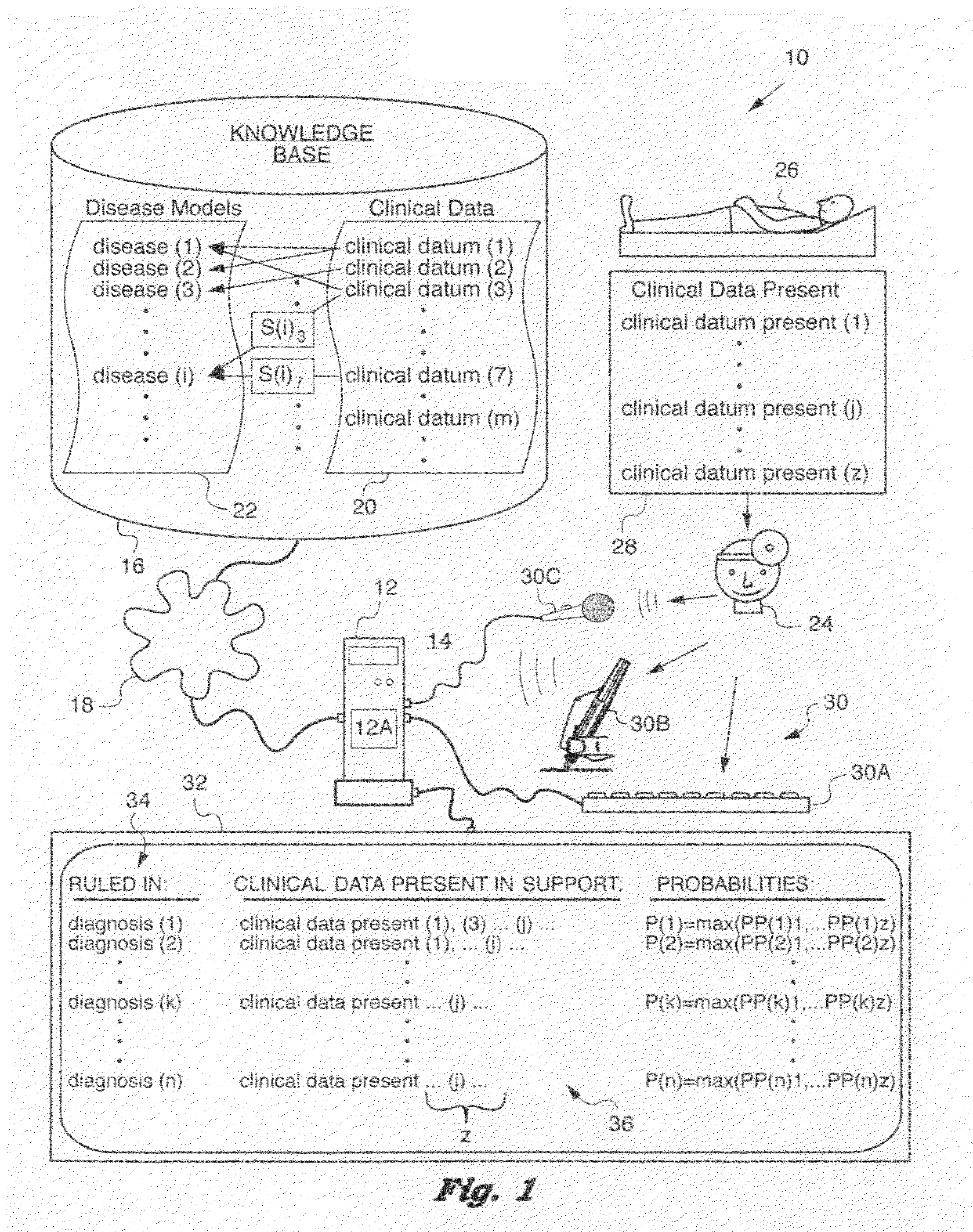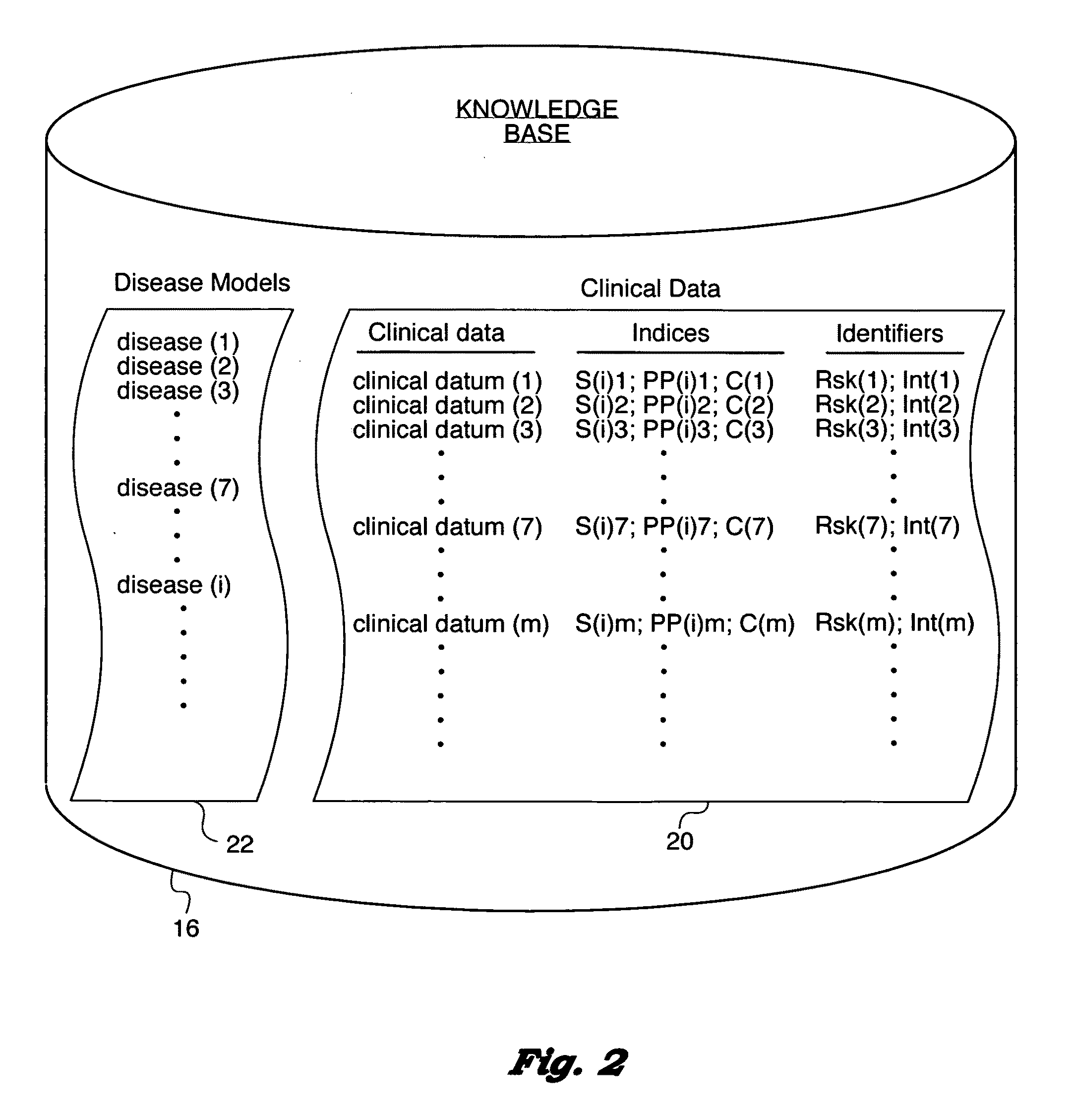Computer-implemented medical analytics method and system employing a modified mini-max procedure
a medical analytics and computer-implemented technology, applied in the field of computer-implemented medical analytics methods and systems, can solve the problems of inability to accurately predict the probability of a given diagnosis, etc., to achieve the effect of simplifying probabilistic determinations, reducing complexity, and being difficult to quantify
- Summary
- Abstract
- Description
- Claims
- Application Information
AI Technical Summary
Benefits of technology
Problems solved by technology
Method used
Image
Examples
example 1
[0282]Patient 26 presents with recent-onset fever. History 28 (see FIG. 1) and physical examination are otherwise normal. Symptomatic treatment for a few days is deemed adequate, while observing evolution of disease (i) that may be only a mild viral infection that may spontaneously resolve. Should patient 26 not improve, but his general condition remain stable, general blood and urine tests, a blood culture, and a chest X-ray are indicated. Should these moderate cost studies all be negative, empiric treatment with a broad-spectrum antibiotic can be started. Should the patient not respond, an intensive work-up to achieve an accurate final diagnosis would be indicated.
example 2
[0283]Patient 26 complains only of recent-onset cough. This could be a mild bronchitis treatable with a cough suppressant and expectorant. However, should patient 26 not recover soon, other diagnoses (k) such as lung cancer must be considered.
[0284]Such cost-saving deferral of diagnosis (k) risks missing the opportunity to cure a serious disease (i). For this reason, observation should be brief, carefully monitored, and the cost-benefit issue clearly understood by patient 26.
[0285]Deferred diagnosis, empirical treatment, and other decisions required of physician 24 confronting disease (i) are not readily translated into the algorithm running on computer 12. Advantageously providing the algorithm the necessary parameters—for example, patient age, general condition, potential seriousness of certain clinical data (m) or diagnoses (k)—Can enable computer assistance with such decisions. Physician 24 is alerted to risk-flagged (Rsk) clinical data (m) and diseases (k) and dangerous (or “pa...
PUM
 Login to View More
Login to View More Abstract
Description
Claims
Application Information
 Login to View More
Login to View More - R&D
- Intellectual Property
- Life Sciences
- Materials
- Tech Scout
- Unparalleled Data Quality
- Higher Quality Content
- 60% Fewer Hallucinations
Browse by: Latest US Patents, China's latest patents, Technical Efficacy Thesaurus, Application Domain, Technology Topic, Popular Technical Reports.
© 2025 PatSnap. All rights reserved.Legal|Privacy policy|Modern Slavery Act Transparency Statement|Sitemap|About US| Contact US: help@patsnap.com



